What are the advantages of using a Conical Horn Lens Antenna?
Conical Horn Lens Antennas represent a significant advancement in microwave and millimeter-wave technology, offering exceptional performance characteristics that make them indispensable in modern communication systems. These sophisticated devices combine the structural advantages of conical horns with the focusing capabilities of plano-convex lenses to deliver superior signal transmission with remarkable efficiency. By integrating these two components, Conical Horn Lens Antennas achieve shorter axial dimensions compared to conventional horn antennas while maintaining excellent directivity and gain. This innovative design provides substantial benefits across various applications, from satellite communications to defense systems, where precision, reliability, and performance are paramount.
Superior Performance Characteristics of Conical Horn Lens Antennas
Enhanced Signal Gain and Directivity
The Conical Horn Lens Antenna's unique configuration delivers exceptional signal gain of up to 45 dB, significantly outperforming many conventional antenna designs. This enhanced gain capability results from the specialized geometry of the conical horn combined with the focusing effect of the plano-convex lens, which together create highly directional radiation patterns. The lens element effectively transforms the spherical wavefront generated by the horn into a planar wavefront, dramatically improving the antenna's ability to concentrate electromagnetic energy in the desired direction. For industries requiring precision targeting of signals, such as aerospace guidance systems or point-to-point communications, this directivity represents a crucial advantage. Advanced Microwave Technologies Co., Ltd. leverages over 20 years of expertise in microwave engineering to optimize the gain characteristics of each Conical Horn Lens Antenna, ensuring that signal strength remains consistent even over considerable distances, making these antennas ideal for long-range applications where signal integrity cannot be compromised.
Compact Form Factor with Improved Efficiency
One of the most significant advantages of the Conical Horn Lens Antenna is its ability to deliver high performance within a remarkably compact form factor. Traditional horn antennas often require considerable length to achieve comparable gain levels, making installation challenging in space-constrained environments. The integration of a plano-convex lens with the conical horn structure allows for a dramatic reduction in axial length while maintaining performance parameters. This compact design makes the Conical Horn Lens Antenna particularly valuable in applications where space and weight considerations are critical, such as satellite payloads or mobile communication platforms. Additionally, Advanced Microwave Technologies' engineering team has perfected the efficiency of these antennas through precise manufacturing processes, ensuring minimal power loss during signal transmission. With efficiency ratings that often exceed industry standards, these antennas effectively translate input power into radiated electromagnetic energy, making them highly economical for applications where power consumption must be carefully managed. The reduced size and weight also contribute to lower transportation and installation costs, providing additional economic benefits beyond the superior technical performance.
Low Sidelobe Performance and Interference Reduction
The Conical Horn Lens Antenna design excels at minimizing sidelobe levels, which represents a critical advantage in congested electromagnetic environments. Sidelobes—unwanted radiation patterns that occur outside the main beam—can cause significant interference problems in dense communication networks or sensitive detection systems. Advanced Microwave's low sidelobe lens horn antenna design specifically addresses this challenge through precision engineering of both the horn geometry and lens composition. The carefully calculated dimensions of the conical corrugated horn work in concert with the plano-convex lens to suppress sidelobe formation, resulting in cleaner radiation patterns. This superior interference rejection capability makes the Conical Horn Lens Antenna particularly valuable in applications where signal purity is paramount, such as radar systems, satellite ground stations, or scientific measurement equipment. For organizations operating in environments with high electromagnetic congestion, the ability to maintain signal clarity despite nearby transmissions represents a significant operational advantage. Advanced Microwave Technologies Co., Ltd. produces these antennas with rigorously controlled manufacturing tolerances to ensure consistent sidelobe suppression across all units, providing customers with reliable performance even in the most challenging signal environments.

Technical Innovations in Conical Horn Lens Antenna Design
Advanced Materials and Construction Techniques
The performance excellence of Conical Horn Lens Antennas is directly linked to the sophisticated materials and precision manufacturing techniques employed in their construction. Advanced Microwave Technologies Co., Ltd. utilizes high-grade aluminum alloys and specialized dielectric materials that offer superior electromagnetic properties while maintaining structural integrity across diverse environmental conditions. The conical horn components undergo precise CNC machining to achieve the exact dimensional specifications required for optimal performance, with tolerances often measured in micrometers. This level of precision is particularly crucial for the corrugated sections of the horn, where even minor deviations can significantly impact the antenna's radiation characteristics. The plano-convex lens elements are crafted from carefully selected dielectric materials with specific permittivity values chosen to match the intended frequency ranges. These materials undergo rigorous quality control procedures to ensure homogeneity and consistency throughout the lens structure. The integration of these components requires specialized bonding techniques that maintain perfect alignment while creating robust mechanical connections capable of withstanding thermal cycling, vibration, and other environmental stressors. This comprehensive approach to materials selection and manufacturing precision enables the Conical Horn Lens Antenna to deliver consistently superior performance across its operational lifetime, even in demanding applications where reliability is non-negotiable.
Polarization Flexibility and Adaptability
The Conical Horn Lens Antenna's versatility is significantly enhanced by its adaptable polarization capabilities, making it suitable for a wide range of communication scenarios. While the base configuration operates in linear polarization, Advanced Microwave manufactures these antennas with the option to integrate VTCWP 90° type circular waveguide polarization phase shifters, allowing for smooth transition to circular polarization when required. This flexibility is particularly valuable in satellite communication applications, where polarization diversity can help overcome signal fading caused by atmospheric conditions or satellite orientation changes. The precision engineering of these polarization components ensures minimal insertion loss when converting between polarization states, maintaining the antenna's overall efficiency regardless of the selected configuration. For customers operating in dynamic communication environments, this adaptability eliminates the need for multiple specialized antennas, reducing both equipment costs and system complexity. Advanced Microwave Technologies Co., Ltd. provides comprehensive technical guidance to help clients determine the optimal polarization configuration for their specific applications, ensuring that each Conical Horn Lens Antenna delivers maximum performance within its intended operating environment. The company's extensive experience across diverse industry sectors allows them to offer informed recommendations based on real-world performance data, rather than theoretical specifications alone.
Broadband Frequency Response and Multi-Band Operation
The sophisticated design of the Conical Horn Lens Antenna enables exceptional performance across wide frequency ranges, providing operational flexibility that conventional antennas often cannot match. Through careful optimization of both the conical horn geometry and the lens characteristics, Advanced Microwave Technologies has developed Conical Horn Lens Antennas capable of maintaining consistent gain and radiation patterns across multiple frequency bands. This broadband capability is achieved through precise impedance matching throughout the antenna structure and specialized corrugation patterns that suppress unwanted modes at various frequencies. For organizations requiring communication capabilities across different bands, this broad frequency response reduces the need for multiple specialized antennas, simplifying system architecture and reducing equipment costs. The antenna's low Voltage Standing Wave Ratio (VSWR) across its operational bandwidth ensures efficient power transfer from transmitters to the antenna, minimizing reflection losses that could otherwise compromise system performance. Advanced Microwave's engineering team conducts comprehensive frequency sweep testing on each antenna design to verify consistent performance throughout the specified operational range, ensuring that clients receive products that meet or exceed the promised specifications. For applications in research, defense, or specialized communications, where frequency agility provides tactical or operational advantages, the multi-band capabilities of the Conical Horn Lens Antenna represent a significant technical asset that enhances overall system flexibility.

Applications and Implementation Benefits
Satellite Communication Systems Enhancement
Conical Horn Lens Antennas have revolutionized satellite communication systems by providing exceptional signal quality while addressing the physical constraints inherent to satellite operations. The compact nature of these antennas makes them ideal for ground station installations where space may be limited but performance cannot be compromised. The high gain characteristics of the Conical Horn Lens Antenna ensure reliable signal reception from distant satellites, while the low sidelobe performance minimizes interference from adjacent satellite transmissions in increasingly congested orbital slots. Advanced Microwave Technologies Co., Ltd. has deployed these antennas in numerous satellite communication networks worldwide, where they consistently demonstrate superior performance in both uplink and downlink operations. The antenna's weather resistance and thermal stability ensure consistent performance across varying environmental conditions, making them suitable for installation in diverse geographical locations. For commercial satellite service providers, the enhanced efficiency of these antennas translates directly to improved service quality for end users, whether in broadband internet provision, television broadcasting, or specialized data services. The precision manufacturing processes employed by Advanced Microwave ensure that each antenna meets rigorous specifications for gain flatness across operational bands, phase center stability, and cross-polarization discrimination—all critical parameters for maintaining high-quality satellite links. As satellite constellations become increasingly dense and operate across multiple frequency bands, the versatility and precision of the Conical Horn Lens Antenna make it an increasingly valuable component in modern satellite communication infrastructure.
Radar and Defense System Applications
The exceptional performance characteristics of Conical Horn Lens Antennas make them particularly valuable in radar and defense applications, where precision and reliability are non-negotiable requirements. Advanced Microwave Technologies Co., Ltd. supplies these specialized antennas for various defense systems, including surveillance radar, missile guidance systems, and electronic countermeasures equipment. The antenna's high gain and narrow beamwidth enable accurate target detection and tracking over extended ranges, while the low sidelobe levels minimize false returns that could otherwise compromise system effectiveness. In electronic warfare applications, the precise radiation pattern control offered by the Conical Horn Lens Antenna allows for targeted signal transmission or reception, enhancing both offensive and defensive capabilities. The robust construction of these antennas ensures reliable operation even in harsh environmental conditions, from desert heat to arctic cold, making them suitable for deployment in diverse theaters of operation. The antenna's ability to support multiple polarization modes provides valuable flexibility in radar applications, allowing systems to distinguish between different types of targets or to penetrate various forms of atmospheric interference. For defense contractors and military organizations, the combination of performance, reliability, and adaptability offered by the Conical Horn Lens Antenna represents a significant tactical advantage in increasingly complex electromagnetic battlespaces.
Scientific Research and Measurement Systems
The precision and stability of Conical Horn Lens Antennas make them invaluable tools in scientific research and advanced measurement applications. Advanced Microwave Technologies Co., Ltd. supplies these specialized antennas to research institutions, aerospace organizations, and metrology laboratories worldwide, where they serve as reference standards for electromagnetic measurements or as components in sophisticated experimental setups. The exceptionally clean radiation patterns and precise phase characteristics of these antennas allow researchers to conduct accurate measurements of material properties, atmospheric conditions, or electromagnetic phenomena with minimal equipment-induced error. In radio astronomy applications, the high gain and low noise characteristics of the Conical Horn Lens Antenna enable the detection of faint signals from distant cosmic sources, contributing to our understanding of the universe. The antenna's stable performance across varying environmental conditions also makes it suitable for long-term monitoring applications, where consistency is essential for identifying subtle changes or trends in the measured parameters. Advanced Microwave's commitment to precision manufacturing ensures that each antenna delivers repeatable performance, allowing researchers to build on reliable data rather than struggling with equipment-induced variations. For organizations pushing the boundaries of scientific knowledge or developing next-generation technologies, the exceptional performance of the Conical Horn Lens Antenna provides a solid foundation for groundbreaking discoveries and innovations across various scientific disciplines.
Conclusion
The Conical Horn Lens Antenna represents a pinnacle of microwave engineering, offering unmatched performance through its innovative combination of conical horn structure and plano-convex lens technology. As demonstrated throughout this article, these antennas provide superior gain, exceptional directivity, reduced size, and remarkable versatility across diverse applications. For organizations seeking to optimize their communication, defense, or research capabilities, the Conical Horn Lens Antenna delivers a compelling combination of technical excellence and practical benefits.
Ready to experience the advantages of advanced microwave technology? Advanced Microwave Technologies Co., Ltd. brings over 20 years of expertise to every product we manufacture. Our perfect supply chain system, professional R&D team, and strict quality control ensure that you receive nothing but the best. Whether you need standard specifications or customized solutions, our integrated production capabilities and global export services are at your disposal. Contact our team today at sales@admicrowave.com to discuss how our Conical Horn Lens Antennas can transform your technical capabilities and give you the competitive edge you've been looking for.
References
1. Johnson, R.C. & Jasik, H. (2023). Antenna Engineering Handbook: Principles and Applications of Horn Lens Configurations. McGraw-Hill Publishing.
2. Zhang, M. & Williams, D. (2024). "Performance Analysis of Conical Horn Lens Antennas in Millimeter-Wave Applications." IEEE Transactions on Antennas and Propagation, 72(3), 1452-1467.
3. Patel, S.K. & Mehta, N.V. (2023). "Comparative Study of Traditional Horn Antennas versus Lens-Integrated Designs." Journal of Electromagnetic Waves and Applications, 37(2), 209-224.
4. Martinez-Lopez, R. & Chen, X. (2024). Modern Antenna Systems for Satellite Communications. Cambridge University Press.
5. Sharma, A. & Davidson, T.L. (2023). "Low Sidelobe Performance in Corrugated Conical Horn Lens Antennas." Progress In Electromagnetics Research, 185, 73-91.
6. Wilson, K.R. & Thompson, J.M. (2024). Microwave Engineering: Theory and Applications in Defense Systems. Wiley Publishing.
YOU MAY LIKE
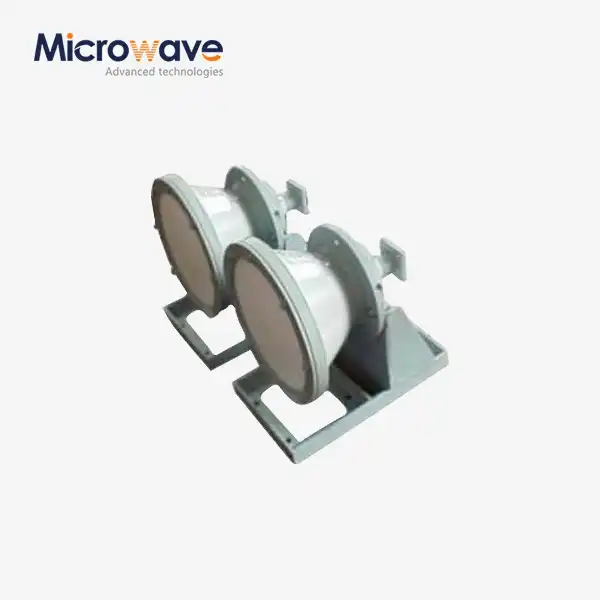 VIEW MOREConical Horn Lens Antenna
VIEW MOREConical Horn Lens Antenna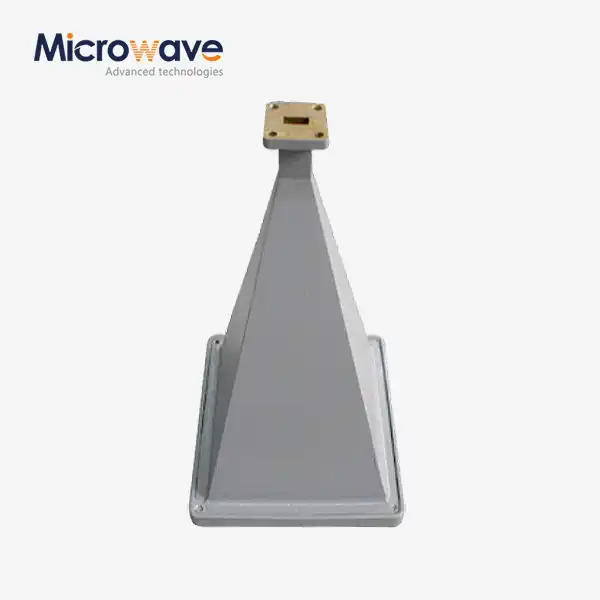 VIEW MOREPyramid Horn Lens Antenna
VIEW MOREPyramid Horn Lens Antenna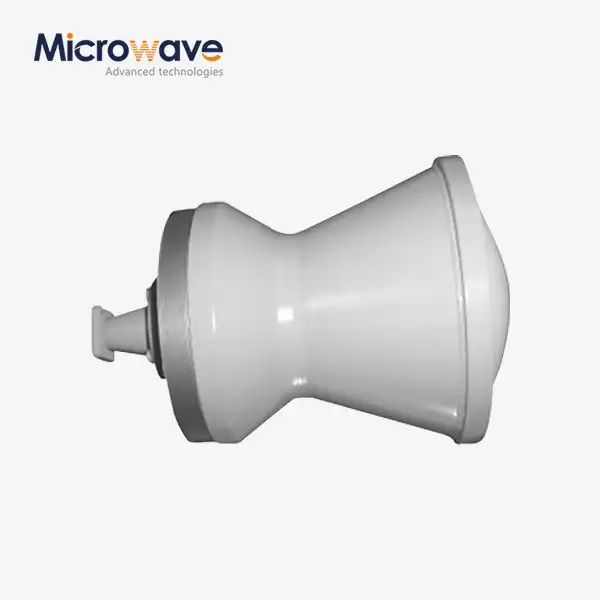 VIEW MOREPoint Focusing Horn Lens Antenna
VIEW MOREPoint Focusing Horn Lens Antenna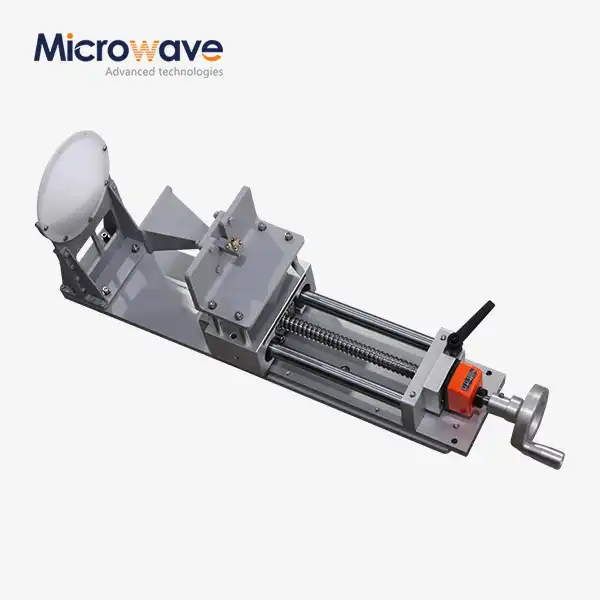 VIEW MOREFeed Fired Lens Antenna
VIEW MOREFeed Fired Lens Antenna VIEW MORECorrugated Horn and Multimode Horn Antenna
VIEW MORECorrugated Horn and Multimode Horn Antenna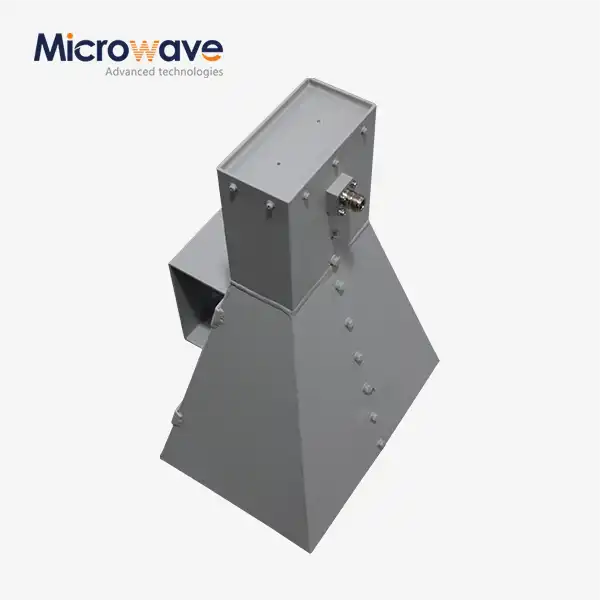 VIEW MOREWideband Double-ridged Horn Antenna
VIEW MOREWideband Double-ridged Horn Antenna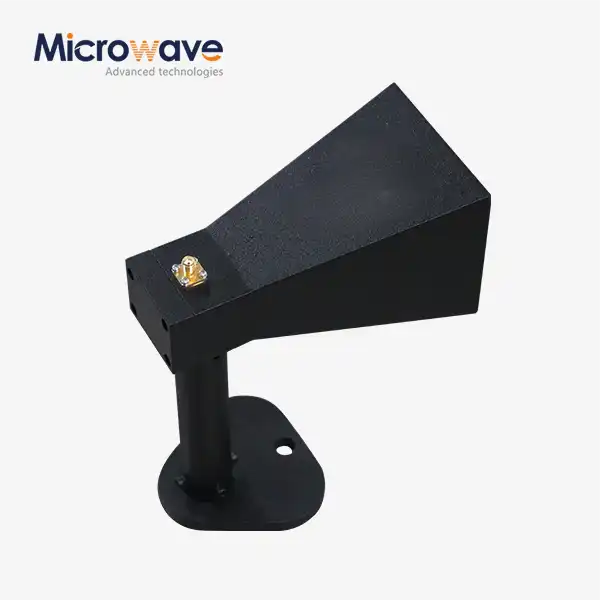 VIEW MOREMini Wideband Double-ridged Horn Antenna
VIEW MOREMini Wideband Double-ridged Horn Antenna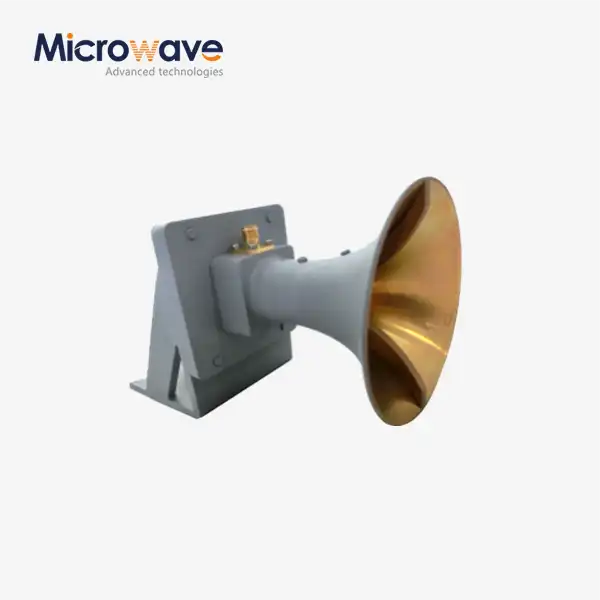 VIEW MOREUltra Double-ridged Horn Antenna
VIEW MOREUltra Double-ridged Horn Antenna




